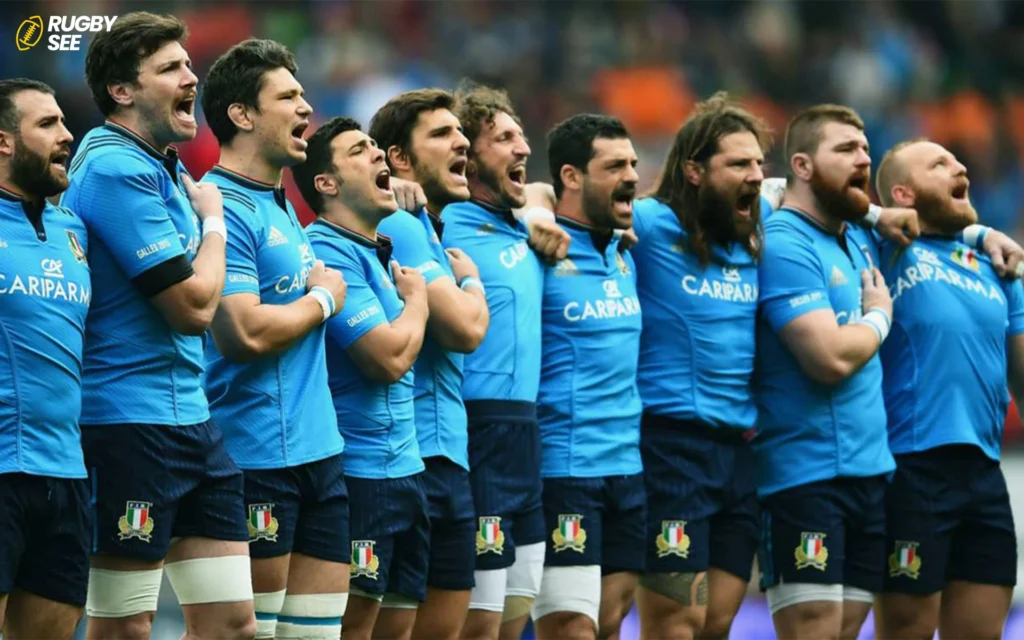Rugby, though not as popular as football in Italy, has a rich and fascinating history that dates back over a century. The story of Italian rugby is one of passion, growth, and the establishment of Italian rugby league clubs that have made significant contributions to the sport. In this article on rugbysee website, we explore the evolution of rugby in Italy, examining key moments and advancements. So be sure to stay with us until the end of this fascinating topic.
The Dawn of Rugby in Italy: The Early 20th Century
- Exploring the Roots: How Rugby Arrived in Italy
- The Birth of Italian Rugby League Clubs
Post-War Renaissance: The 1950s and 1960s Surge
- Rebuilding and Growth: Rugby’s Resurgence After WWII
- The Rise of Competitions and National Interest
The Golden Era: Professionalism in the 1970s and 1980s
- The Evolution of Italian Rugby Clubs
- Italian Rugby Steps onto the European Stage
A New Millennium: Italy Enters the Six Nations
- The Six Nations Debut: A Milestone for Italian Rugby
- The Ripple Effect: Boosting Club Rugby in Italy

Facing the Future: Contemporary Challenges and Prospects
- Navigating Modern Challenges: Italian Rugby’s Path Forward
- The Pivotal Role of Italian Rugby League Clubs Today
The Early Days: Rugby’s Introduction to Italy
Rugby was introduced to Italy in the early 20th century, primarily by British expatriates. The first Italian rugby league clubs were formed by these expatriates and enthusiastic locals who were drawn to the sport’s unique blend of physicality and teamwork. The early days were marked by informal matches and the gradual spread of rugby knowledge and skills among Italian athletes.
The Formation of the First Clubs
The 1920s and 1930s saw the formation of the first formal Italian rugby league clubs. These clubs were crucial in establishing a structured rugby environment in Italy. They organized matches, developed local talents, and laid the foundation for the national rugby league system that would emerge later.
Post-World War II: A New Era for Italian Rugby
After World War II, Italian rugby experienced a revival. The 1950s and 1960s were pivotal decades for the sport, with a significant increase in the number of rugby league clubs and players. This period also saw the introduction of regional and national competitions, providing a platform for Italian clubs to showcase their talent.
The Growth of Competitions
The growth of competitions was a key factor in the development of Italian rugby. The Italian Rugby Federation (FIR) played a significant role in organizing these competitions, which became increasingly competitive and popular. This era also saw Italian clubs beginning to compete in international tournaments, marking Italy’s entry onto the world rugby stage.
The 1970s to 1990s: Expansion and Professionalism
The 1970s and 1980s were marked by the expansion of rugby in Italy, both in terms of the number of clubs and the level of play. During this period,
Italian rugby league clubs began to professionalize, attracting better coaches, developing youth academies, and enhancing the overall quality of the sport. The Italian Rugby Federation (FIR) also implemented more structured national leagues and tournaments, further promoting the sport’s growth.
The Rise of Italian Clubs in European Competitions
By the 1990s, Italian rugby clubs had started to make their mark in European competitions. Participating in tournaments like the Heineken Cup, Italian clubs faced off against some of the best teams in Europe, gaining valuable experience and exposure. This period was crucial in elevating the standard of Italian rugby and preparing the national team for more competitive international challenges.
The 2000s: Italian Rugby on the World Stage
The inclusion of Italy in the prestigious Six Nations Championship in 2000 was a landmark moment in Italian rugby history. This development signified recognition of the progress Italian rugby had made and provided an invaluable platform for Italian players to compete against the top rugby nations regularly.
The Impact on Italian Rugby League Clubs
The exposure from the Six Nations had a significant impact on Italian rugby league clubs. It led to increased interest in the sport across the country, more investment in clubs, and an improvement in the quality of domestic competitions. Young players now had more opportunities and pathways to develop their skills and aspire to play at the highest levels.
The Modern Era: Challenges and Opportunities
Today, Italian rugby continues to grow, but it faces challenges such as competing with the popularity of football and addressing the disparity in performance levels compared to other top rugby nations. However, the commitment of Italian rugby league clubs to nurturing young talent and improving their competitive standards keeps the future of Italian rugby bright.

The Role of Italian Rugby League Clubs
Italian rugby league clubs are at the forefront of developing the sport in the country. They are not only centers of rugby excellence but also play a crucial role in promoting the sport at the grassroots level. These clubs are vital in sustaining the growth of rugby in Italy and ensuring a steady supply of talent to the national team.
Conclusion
The history of Italian rugby is a story of perseverance, growth, and passion. From its humble beginnings to its current status on the world stage, Italian rugby has come a long way. Italian rugby league clubs have been instrumental in this journey, contributing significantly to the sport’s development in Italy. As rugby continues to evolve globally, Italian rugby, with its rich history and dedicated clubs, is poised to make even greater strides in the future.










